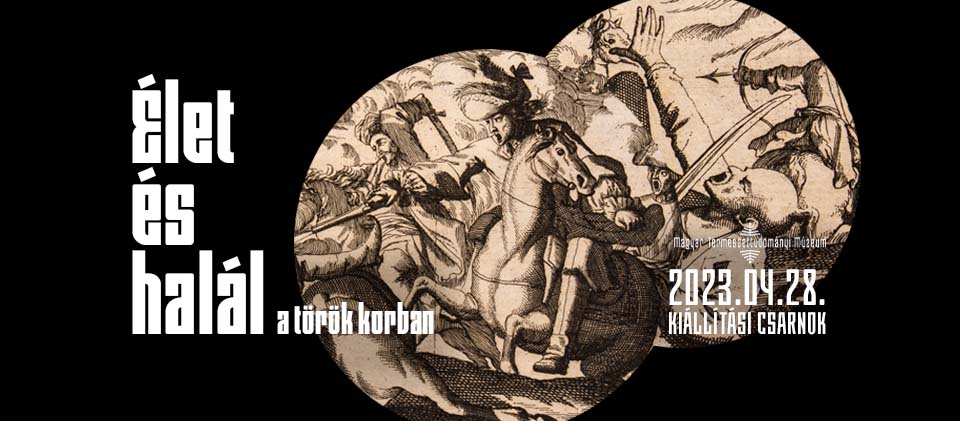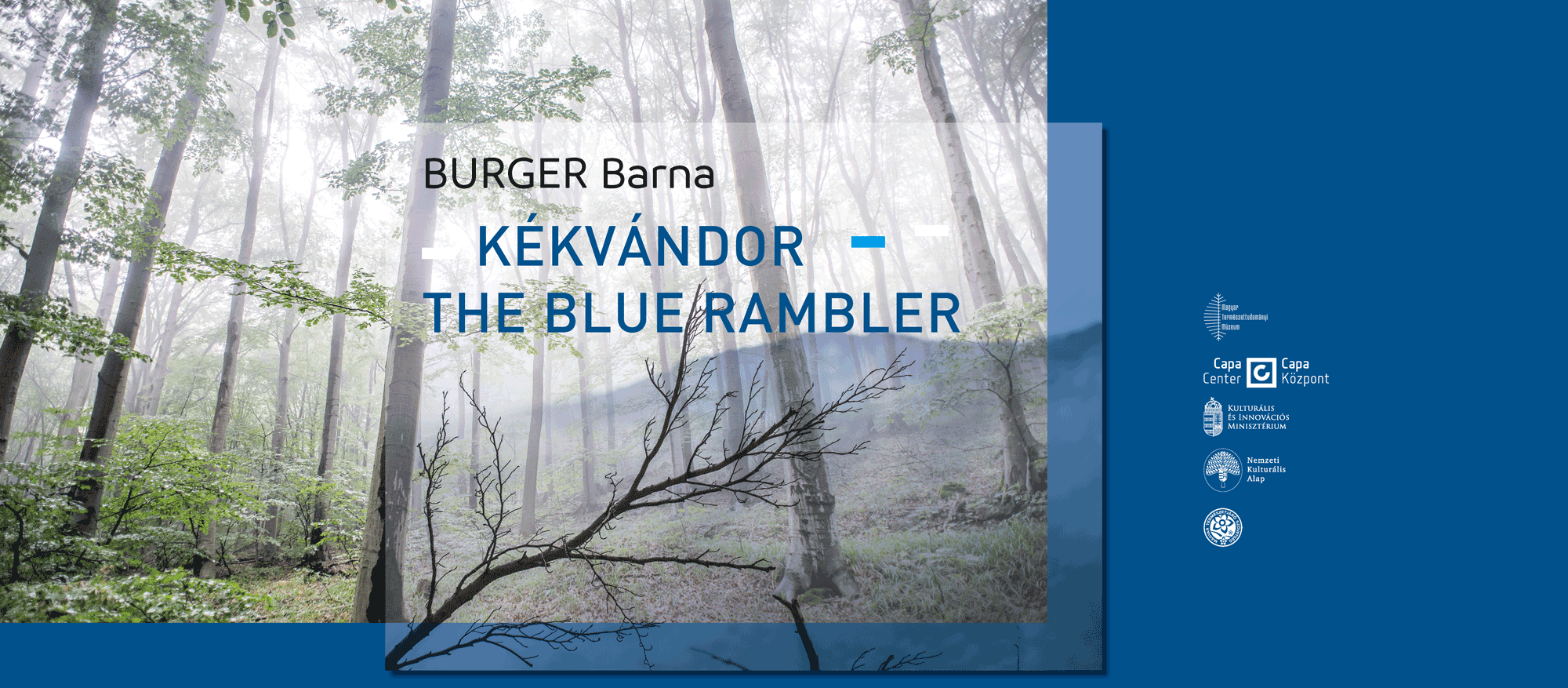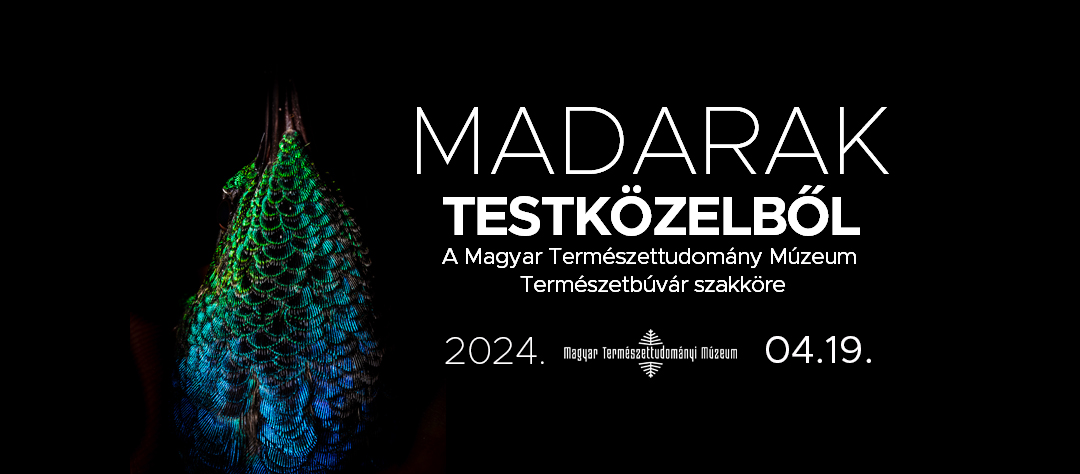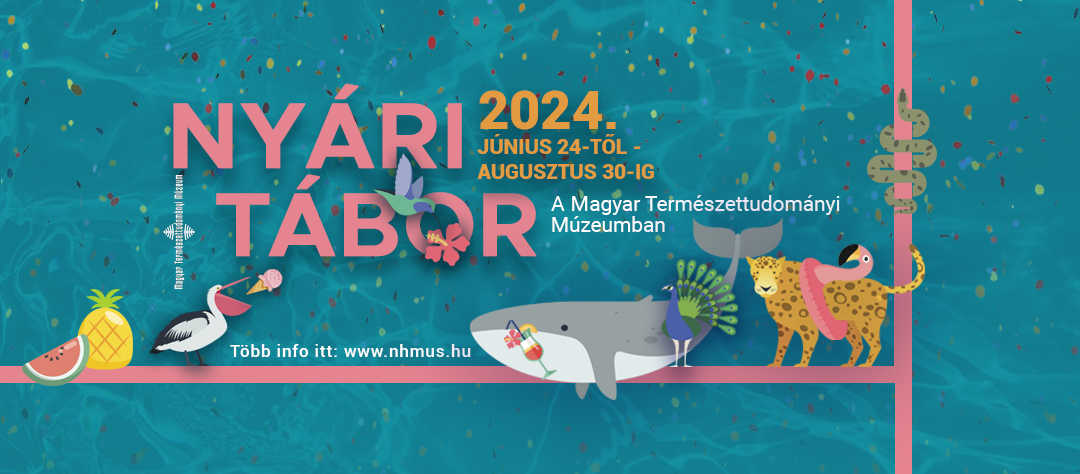A Taxonomic Review of the Genus Crocus L. (Iridaceae) with a Focus on the Taxa Distributed on the Balkan Peninsula
 Levent Can is a Turkish botanist, whose main research field is the study of the systematics, evolutionary history and phylogenetic relationships of the plants belonging to genus Crocus. He is writing his PhD dissertation at the University of Istanbul and also working as a research assistant at the Namik Kemal University in Tekirdağ. He won a prestigious scholarship from DAAD (German Academic Exchange Service), which gave him an opportunity to do following research for his PhD studies at the Carl von Ossietzky University, Oldenburg. Levent arrived here from Germany within the SYNTHESYS program. Read our interview with Levent clicking here.
Levent Can is a Turkish botanist, whose main research field is the study of the systematics, evolutionary history and phylogenetic relationships of the plants belonging to genus Crocus. He is writing his PhD dissertation at the University of Istanbul and also working as a research assistant at the Namik Kemal University in Tekirdağ. He won a prestigious scholarship from DAAD (German Academic Exchange Service), which gave him an opportunity to do following research for his PhD studies at the Carl von Ossietzky University, Oldenburg. Levent arrived here from Germany within the SYNTHESYS program. Read our interview with Levent clicking here.
Project outline
In the case of genus Crocus, a lot of unanswered questions and confusing issues still occur regarding their relations and chromosome numbers. Several new taxa have been published recently, which significantly changed the taxonomy and phylogeny of the genus causing more misplacement in the systematic subgroups. As the Mediterranean Basin represents the richness and diversity of these plants, the researcher observes specimens primarily in the Balkan Peninsula and its surrounding areas. By comparative analysis of the specimens held in the Hungarian Natural History Museum, the main aim of this project is to clarify the distribution patterns of Crocus taxa of the Balkans, examine morphological characters of the specimens, and identify the morphological variation within populations.
Why our institution was chosen
The exploration of plants belonging to genus Crocus is very difficult due to their short flowering term and topographical conditions of their natural habitats. For a better knowledge of their taxonomy, therefore, it is particularly important to examine specimens preserved in herbaria.
Researching flora and fauna of the Balkan regions has tradition in Middle-Europe. The Department of Botany of our institution has a significant collection of the Crocus taxa including approximately 1,400 historical specimens. A several amount of them were collected in the Balkan areas in the last 150 years. Visiting our herbaria provided a good base for a comprehensive analysis of the distribution of these plants.
Achievement and evaluation
Levent Can evaluated his visit as successful and emphasized the importance of our historical herbarium collection. In addition to the revision and review of the genus and the reconstruction of the phylogeny of Turkish and Balkan taxa, another important output of the project will be a Crocus chapter in the new Flora of Turkey book.
The researcher’s host was dr. Zoltán Barina, the curator of the Herbarium Carpato- Pannonicum collection of our museum.
The revision of the flightless click-beetle genus Dima (Coleoptera: Elateridae)
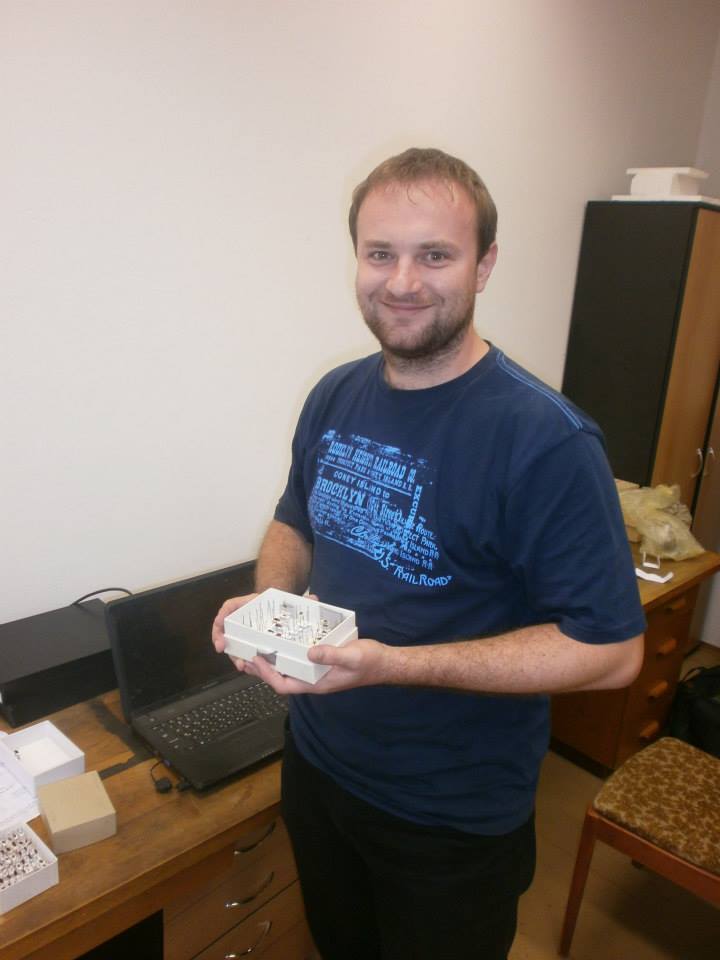 Dr. Robin Kundrata, a post-doctorate member of the Zoology Department of the Palacký University, Olomouc, Czech Republic, has already visited our institution twice within the framework of the Synthesys program. In 2008, he came as a PhD student to research the beetle families Drilidae and Elateridae. Since then, he has become an acknowledged coleopterologist. Robin visited our museum again in 2016, to study the faunistics and taxonomy of a subfamily (Diminae) of the click beetles (Elateridae).
Dr. Robin Kundrata, a post-doctorate member of the Zoology Department of the Palacký University, Olomouc, Czech Republic, has already visited our institution twice within the framework of the Synthesys program. In 2008, he came as a PhD student to research the beetle families Drilidae and Elateridae. Since then, he has become an acknowledged coleopterologist. Robin visited our museum again in 2016, to study the faunistics and taxonomy of a subfamily (Diminae) of the click beetles (Elateridae).
Project outline
The main objective of the project was the revision of the relevant Coleoptera material of the HNHM that has recently been collected in Balkan expeditions. The completion of the confusing former descriptions and the unsatisfactory knowledge of the distribution were necessary for precise determination of Dima species. In addition, the research aimed to expand the biogeographic knowledge; present occurrences of these flightless species seem to indicate the Pleistocene refugia, in which the broad-leaved forests survived the last glacial period.
Why our institution was chosen
The main reason why only a small amount of Dima material is preserved in the European public or private collections is that these beetles live in highlands above 1000 metres –some of them can be found only on one particular mountain– and it is possible to collect them only during the night, as they hide in the leaf litter during the day. However, due to the international expeditions of recent years, a significant number of specimens belonging to Dima species have been assembled and preserved in our institution.
The HNHM has mutually beneficial and close connections with the most important European museums, thus our colleagues could easily obtain the type specimens of previously described species for the time of the project. The validation and comparative analysis of these species would have been impossible without their study. The efficiency of this project had also been indicated and determined by Kundrata’s former collaborations with our coleopterologists.
Achievement and evaluation
Robin Kundrata has created a draft on the revision of the Dima species that are endemic in the Balkan Peninsula in collaboration with our colleague, Tamás Németh. Their publication, planned to publish for the end of 2016, will include the description of 8 species new to science and also synonymisations of previously described species. Robin Kundrata also plans another visit to our museum to study the species from the Indo-Malayan region and to participate in the construction of the molecular phylogenetic tree of the Dima species. He evaluated our coleopterologists’ competence and helpfulness as excellent which helped him to complete this project. His host was Dr. Ottó Merkl, the senior curator of the Coleoptera Collection of the HNHM.
Systematic description of Late Jurassic, Kimmeridgian ammonite fauna of Páskom Hill, Bakony Mts, Hungary
 The volunteer palaeontologist Armin Scherzinger is one of the most experienced researchers in the field of the Upper Jurassic – particularly the Kimmeridgian and Tithonian – ammonites in Germany. As a result of his earlier international collaboration and research, he has published significant literature as an author or co-author.
The volunteer palaeontologist Armin Scherzinger is one of the most experienced researchers in the field of the Upper Jurassic – particularly the Kimmeridgian and Tithonian – ammonites in Germany. As a result of his earlier international collaboration and research, he has published significant literature as an author or co-author.
The researcher spent 8 days in our institution within the framework of the Synthesys program in June, 2014 to study the assemblage originated from the Hungarian locality, Páskom Hill.
Project outline
Ammonites, which belong to the molluscan class Cephalopoda, were an essential part of the Jurassic marine ecosystem, thus their palaebiological study is important. However, Late Jurassic ammonites are relatively not well known. The researcher’s main objective in his project was to describe, illustrate and publish the earlier collected but not published specimens – especially focusing on the Nebrodites and aspidoceratid specimens.
Why our institution was chosen
The Late Jurassic, Kimmeridgian ammonite collection of the Hungarian Natural History Museum has significant importance. Due to the very well preserved condition of the material, valuable additional data can be acquired to the taxonomical knowledge of the entire fauna. The study of the Hungarian fossils contributed towards the better understanding of other European Late Jurassic ammonite assemblages, published in the last 150 years.
Achievement and evaluation
Armin Scherzinger evaluated our institution as excellent, emphasising the administration and the collection. He achieved significant results in collaboration with his host, dr. István Főzy, the researcher and senior curator of the Invertebrate Palaeontology Collection of our museum. The two palaeontologists were the first to document the occurrence of several species and genera, including Sutneria in the Hungarian material. The results of the project will be published in international professional palaeontological journals and also in the form of a monograph.
Catalogue of the Chrysidid types (Hymenoptera: Chrysididae) housed in the Magyar Természettudományi Múzeum, Budapest
Paolo Rosa, an Italian independent researcher and Chrysididae specialist, visited the Hymenoptera Collection of the Hungarian Natural History Museum within the frameworks of Synthesys Program in December, 2014.
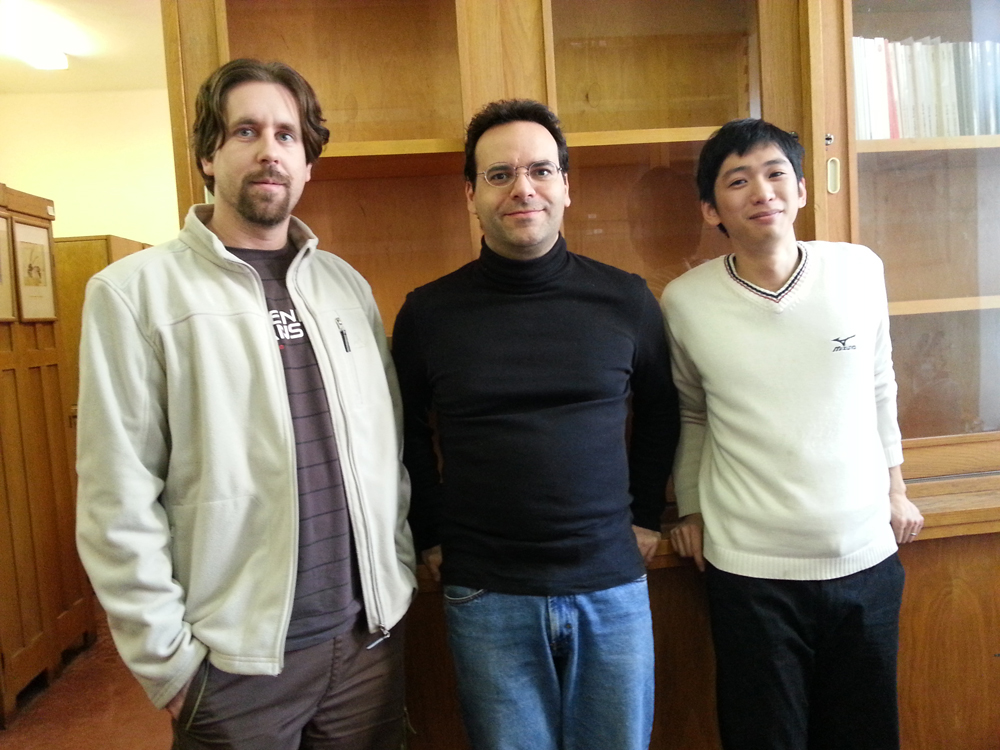
From left to right: Zoltán Vas, Paolo Rosa, Na-sen Wei
Project outline
The researcher’s aim was to study and revise the type material of Chrysididae preserved in our institute. The clarification of type status, the identification of original type series (syntypes) and the designation of lectotypes are only possible by comparing the original descriptions of the species and the labels of the preserved specimens. The completion of this project by clarification of nomenclatural and taxonomic problems is essential for a Palaearctic identification key, while it also provides the Fauna Europaea project with important data. In addition, it enhances the value, orderliness and processing status of our collection.
Why our institution was chosen
The Chrysididae material of the Hymenoptera Collection of the Hungarian Natural History Museum preserves approximately 18,000 specimens from all over the world. Due to Sándor Mocsáry and László Móczár, the type material is outstanding, one of the most significant worldwide. This part of the collection includes at least 900 type specimens.
Paolo Rosa had previously discovered mistakes in taxonomic interpretation of some Chrysididae type specimens in our museum. The Synthesys project provided an opportunity for him to revise the complete Palaearctic type material and create its catalogue.
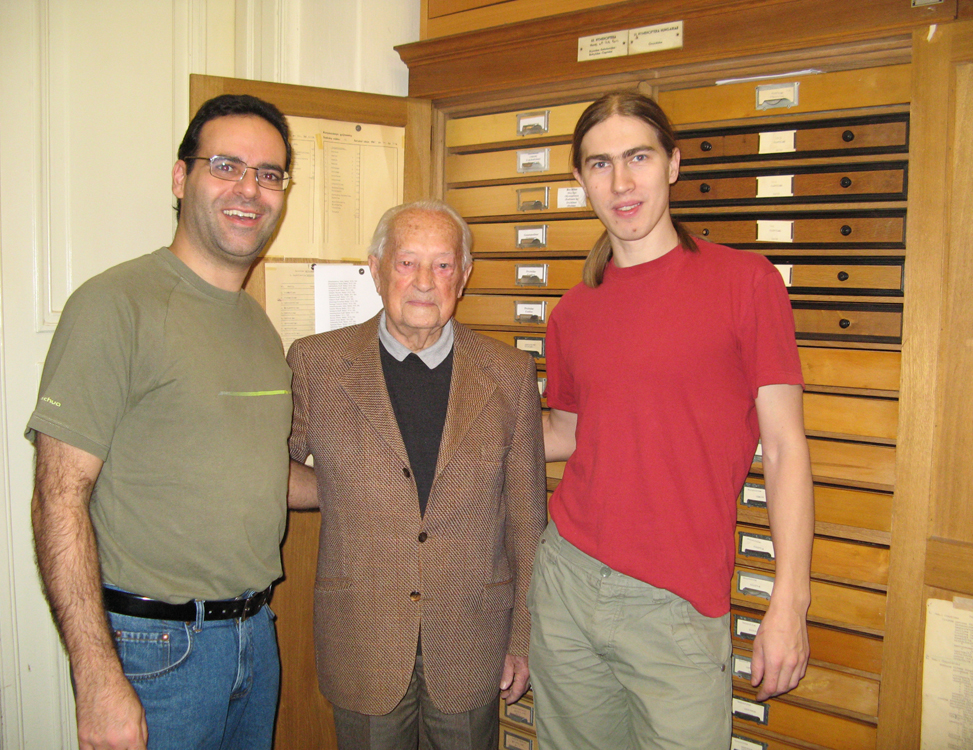
From left to right: Paolo Rosa, László Móczár, Villu Soon
Achievement and evaluation
The status of 130 specimens that had been labelled incorrectly, was clarified to be primary or secondary types and 90 specimens that had been known as types were revealed that they were not types. The researcher synonymised four taxa and designated ten lectotypes and one neotype. A catalogue about the complete type material is in preparation. Partial results of the project have been published in the Zootaxa and Zookeys, further publication of outputs are in progress. Paolo Rosa’s host was Dr. Zoltán Vas, the curator of the Hymenoptera Collection. The researcher evaluated our institution excellent, emphasizing the well-organized facilities and the significance of the collection and database.
Comparative analysis of fossils of Middle and Upper Pleistocene Hyaenidae and Felidae from Europe
Dr. Elena Ghezzo, a post-doctorate member of the University of Florence, Faculty of Earth Science, spent 15 days in the Palaeovertebrate Collection of our institution in 2014, within the frameworks of the Synthesys program. She studies carnivoran fossils and the faunal associations dated back to Middle and Late Pleistocene, a time closely related to the human migration in Europe. Previously, she had done detailed biochronologic and taxonomic research on mammals of Italy, valuable results of which she performed at different professional events. Her interesting study about the deposits of Grotta Equi caves displayed by innovative 3D reconstructions belongs to her significant scientific works.
Project outline
The high variability among the species is pointed out by the comparative analysis of fossils. The comparison should include different specimens from several sites, spread all over the range of the species, such as the entire European Mainland for extinct carnivores. In particular, skeletons of large felids can be considered as a unique schema differently developed in size and features in response to specialization of a particular hunting method and/or their environments. Moreover, European cave hyenas showed similar social adaptations to the African homologues, and their Pleistocene distribution retraces a positive strategy and an increasing demographic trend concluded with the Late Pleistocene glaciation event. A GIS approach to the study of such European carnivores is important in order to disclose their variability through time and space and their approach to different habitat and faunal associations.
Why our institution was chosen
The Hungarian Natural History Museum preserving significant Pleistocene mammal fossils and numerous holotypes, belongs to the most important European museums. The localities and the fossils of the approximately 400 palaeo-vertebrate species represent all the main climatic changes in the last 2.5 million years and indicate the faunal association of the age by the percentage of the species occurrence and the different taphonomic context of the localities. Besides, the East European glacial faunal associations are not as well known as twenty or thirty years ago in West Europe because their discovery and scientific description occurred in the last century and many of them are only available either in Hungarian or in the Hungarian libraries. Furthermore, only the most important specimens of each locality are illustrated in the publications, therefore the examination of other specimens for taxonomic or taphonomic analysis is only possible in person in our Collections.
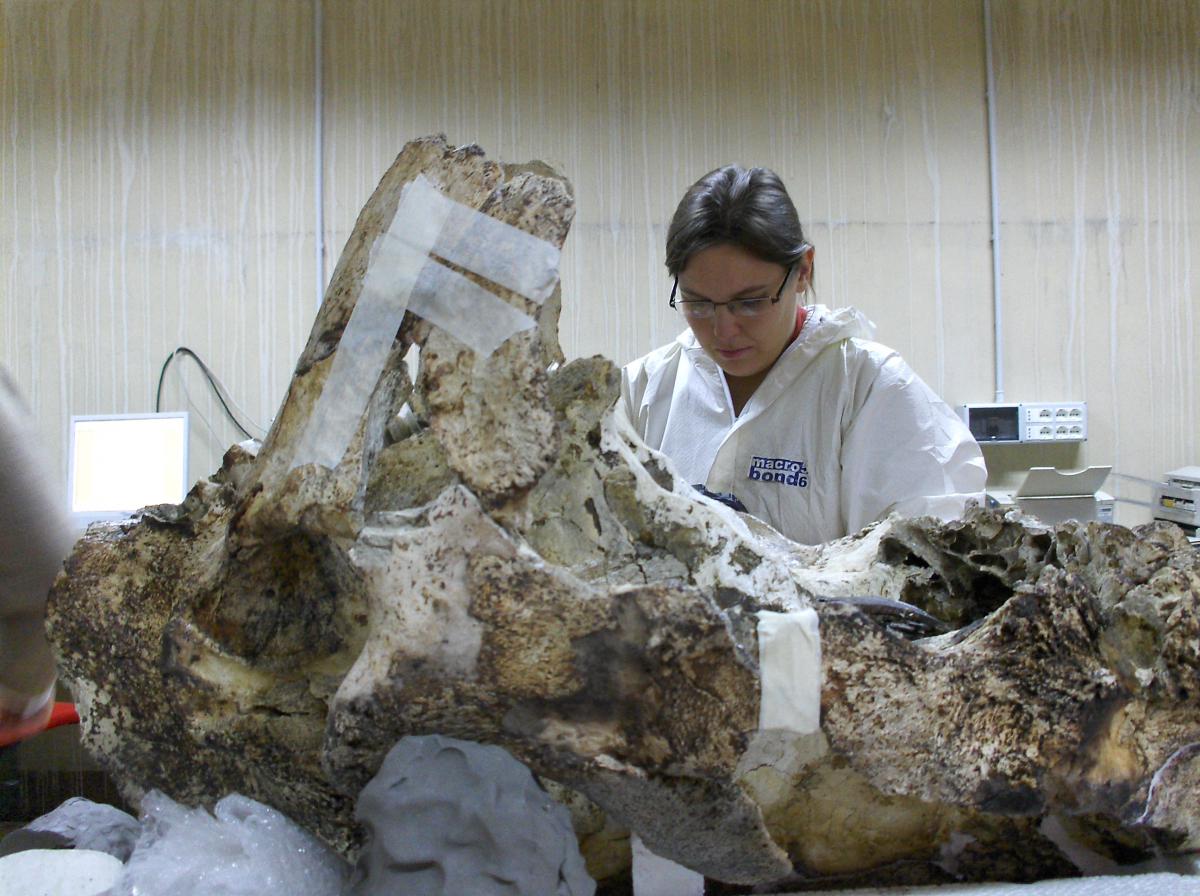
Achievement and evaluation
The revision of carnivores at the Hungarian Natural History Museum in Budapest enabled the revaluation of intraspecific and interspecific variability of extinct lions, comparing the Hungarian specimens with European fossils, in either a morphological and statistical point of view. Moreover, all the information and measurements about felids and hyaenids were recorded in a GIS database and will be used for future researches and for mapping the ranges of carnivores in Europe in different faunal assemblage during the Pleistocene.
The researcher’s host was Dr. Mihaly Gasparik, chief curator of the Paleovertebrate Collection of our Museum. Dr. Ghezzo has considered her experience as one of the most interesting and instructive, emphasizing the friendships created during her visit with several researchers and colleagues, strongly recommending our institution for further visits.
The differences in mandibular morphology between the species Apodemus sylvaticus and A. flavicollis, and the mandibular morphological variation and species identification of Crocidura leucodon, as modern reference samples
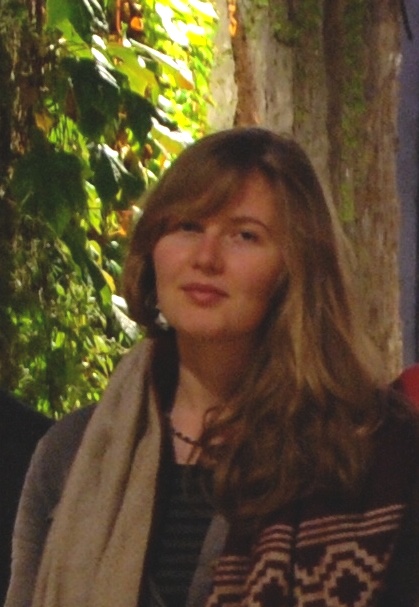 Elizabeth Kerr, as a PhD student visited our institution from the Muséum national d’Histoire naturelle, Paris within the Synthesys program in 2014. The researcher investigates the evolutional correlation of the adaptability of small mammals. In her home institute, she used the combination of morpho-functional modelling of the feeding apparatus in the species of genera Apodemus and Crocidura, and a reconstruction of morpho-functional characteristics of subfossil specimens dating from Late-Glacial to recent Holocene contexts.
Elizabeth Kerr, as a PhD student visited our institution from the Muséum national d’Histoire naturelle, Paris within the Synthesys program in 2014. The researcher investigates the evolutional correlation of the adaptability of small mammals. In her home institute, she used the combination of morpho-functional modelling of the feeding apparatus in the species of genera Apodemus and Crocidura, and a reconstruction of morpho-functional characteristics of subfossil specimens dating from Late-Glacial to recent Holocene contexts.
Project outline
The morphological variation of the mandible between and within species is partially due to differences in feeding and ecology. In the case of small mammals – due to their short generation time –, changes in mandibular morphology can happen noticeably quickly. The small mammals accommodate to human-transformed environment easily; therefore important ecological data can be gained from the investigation of these species. For further studies, it is crucial to describe and map the morphological variation of the species belonging to the genera Apodemus or Crodicura. Identification of Apodemus species is often difficult; thus only correctly determined specimens, supported by genetic data provide a reliable basis for a 3D morphospace model.
Why our institution was chosen
The Mammal Collection of the Hungarian Natural History Museum preserves skulls, and alcohol-conserved specimens of several hundred wood mice and shrews. Most of them were collected in Hungary, although there are specimens from Finland, Italy, Germany, Russia and Slovakia, as well. For the project it was necessary to take macro photos of mandibles of these species and to obtain samples from the alcohol-conserved specimens for DNA studies.
Achievement and evaluation
Elizabeth Kerr succeeded in taking sufficient number of photos and tissue samples for further comparative analysis of the species that are endemic in different geographic regions. The results of the project are in progress and will be published in academic and public journals, as well. The researcher evaluated our museum as excellent, emphasizing the helpfulness and competence of our colleagues. Her host was Tamás Görföl, the curator of the Mammal Collection of HNHM.
Typification of Croatian endemic taxa
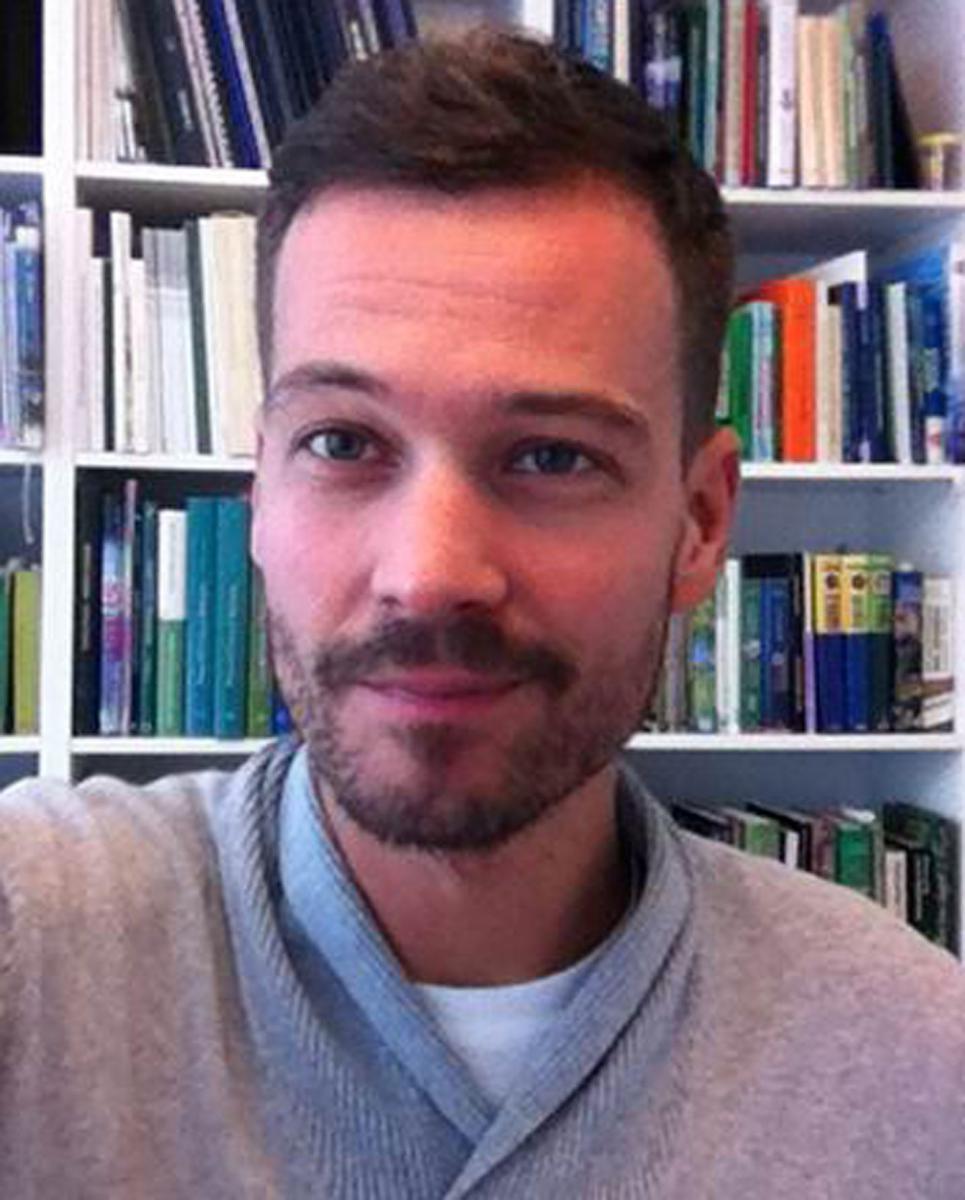 Dr. Sandro Bogdanović, researcher of the Agriculture Department of Zagreb University, visited our institution in 2014 within the framework of Synthesys program. His studies focus on taxonomic and evolutional relevation of the Blakan flora by cytological and molecular methods. Having deficient information of this field, his work means significant contribution in understanding biodiversity of the Balkan Peninsula. Recently, he has described more species of genus Allium, Limonium and Campanula, that are new to science. In addition, his filogenetic investigations have raised new important questions that need to be answered.
Dr. Sandro Bogdanović, researcher of the Agriculture Department of Zagreb University, visited our institution in 2014 within the framework of Synthesys program. His studies focus on taxonomic and evolutional relevation of the Blakan flora by cytological and molecular methods. Having deficient information of this field, his work means significant contribution in understanding biodiversity of the Balkan Peninsula. Recently, he has described more species of genus Allium, Limonium and Campanula, that are new to science. In addition, his filogenetic investigations have raised new important questions that need to be answered.
Project outline
Recent studies have revealed that our knowledge about Croatian endemics plants is insufficient due to unclarified nomenclature and lack of typification. As a first step of clarification, it is essential to assemble original herbarium specimens collected through the years. Dr. Sandro Bogdanović ’s main objective was to provide data for right designation and accurate typification by exploring potential type specimens in the Department of Botany of our institution.
Why our institution was chosen
Until the 20th century, Hungarian botanists had achieved outstanding results in the exploration of Croatian flora. Pál Kitaibel who described numerous species with Adam Waldstein, and Árpád Degen whose monograph, Flora Velebitca, is considered as fundamental, belonged to the most important collectors of the area. Due to them, along with other specialists, such as Borbás Vince, Lengyel Géza, Heinrich Wilhelm Schott, Franz Sieber and Josif Pančić, our museum preserves significant type materials. Visiting the Budapest collection was a good opportunity for dr. Bogdanović to investigate even our historical collections in person, which is a prerequisite for accurate geographic sampling, molceular analysis and further studies.
Achievement and evaluation
During his attandance, Dr. Bogdanović discovered type material of three Croatian endemic taxa (Trifolium velebiticum, Anthyllis aurea subsp. velebitica and Silene velebitica), previously described by Árpád Degen. Working together with Dr. Zoltán Barina, potential lectotypes were selected and the designation of lectotypes is under way. The most important output of his results are the articles published in journals ’Plant Systematics and Evolution’ and ’Phytotaxa’. He also contributed as an author of a book about endemic plant species of Croatia (Nikolić, Toni; Milović, Milenko; Bogdanović, Sandro; Jasprica, Nenad (2015): Endemi u hrvatskoj flori – Alfa d.d., Zagreb, ISBN:978-953-297-763-9).
Dr. Sandro Bogdanović evaluated our institution excellent emphasizing the competence and helpfulness of Dr. Zoltán Barina, the senior curator of the Herbarium Carpato-Pannonicum Colletion of our museum.
Taxonomy and chorology of genus Allium L. in the Balkan Peninsula
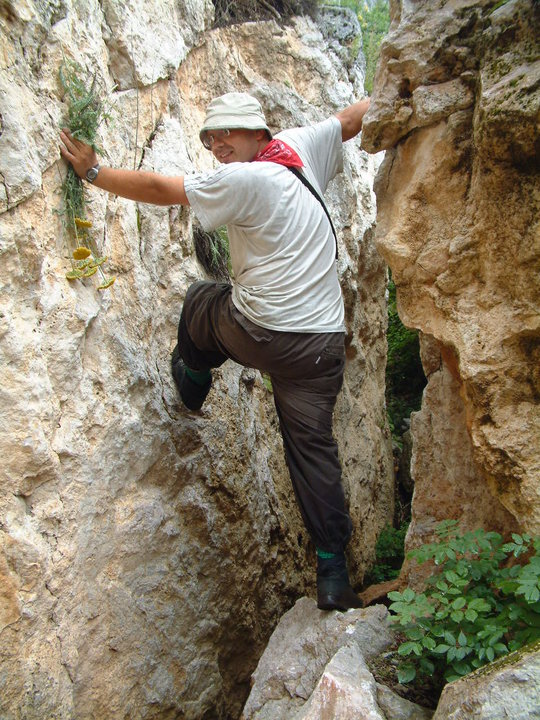 Dr. Goran Anackov, the associate professor of the University of Novi Sad, Faculty of Sciences, visited our institution within the framework of the Synthesys Program in December, 2013. The researcher has contributed in significant chemotaxonomic and floristical developments, and performed presentations of botanic studies from phytocoenological, phytoanatomical and pharmacological aspects in the last 15 years. He also paid special attention to the protection and conservation of natural assets in several scientific projects.
Dr. Goran Anackov, the associate professor of the University of Novi Sad, Faculty of Sciences, visited our institution within the framework of the Synthesys Program in December, 2013. The researcher has contributed in significant chemotaxonomic and floristical developments, and performed presentations of botanic studies from phytocoenological, phytoanatomical and pharmacological aspects in the last 15 years. He also paid special attention to the protection and conservation of natural assets in several scientific projects.
Project outline
Due to the variability of the area, many species of genus Allium L. are endemic and several additional species also occur in the Balkan Peninsula. Recently, a significant number of species have been newly described; however, the meanings and relations of many formerly described names are unclear and within some groups of the genus, hybridization occurs quite often. In addition, literature records included the national flora of the Balkan countries are old, and in terms of many groups they are also deficient. Investigations of type specimens, which our institution preserves in a large number, are inevitable for clarification of the taxonomy and nomenclature of Allium species.
Why our institution was chosen
Dr Goran Anackov’s main objective was the revision of material deposited in the herbarium collections in our museum, as the Balkan flora is well-represented here. He focused on type and original specimens that provided him with essential data for his further studies, and comparative material for the taxonomic examination of species complexes Allium guttatum Steven; A. paniculatum L. és A. saxatile M. Bieb.
Achievement and evaluation
The revision of herbaria at the Hungarian Natural History Museum in Budapest enabled the completion of studies on species complex Allium saxatile of the Balkan Peninsula. Analysis on specimens of A. paczoskianum Tuzson, originating from Ukraine, will be the subject of further studies. The review of numerous herbarium specimens from the group of taxa sections Codonoprasum enabled the continuation of work on infraspecific variability of subspecies A. flavum L., A. carinatum L. and A. fuscum Waldst et Kit. and helped him clarify the problematic status of A. serbicum Pančić.
The researcher’s host was Dr. Zoltán Barina, the senior curator of the Herbarium Carpato-Pannonicum Collection of our museum. Dr. Anackov evaluated his visit as successful, emphasized the excellence of the collection, the professional knowledge and hospitality of the staff, recommending our institution for further visits.
